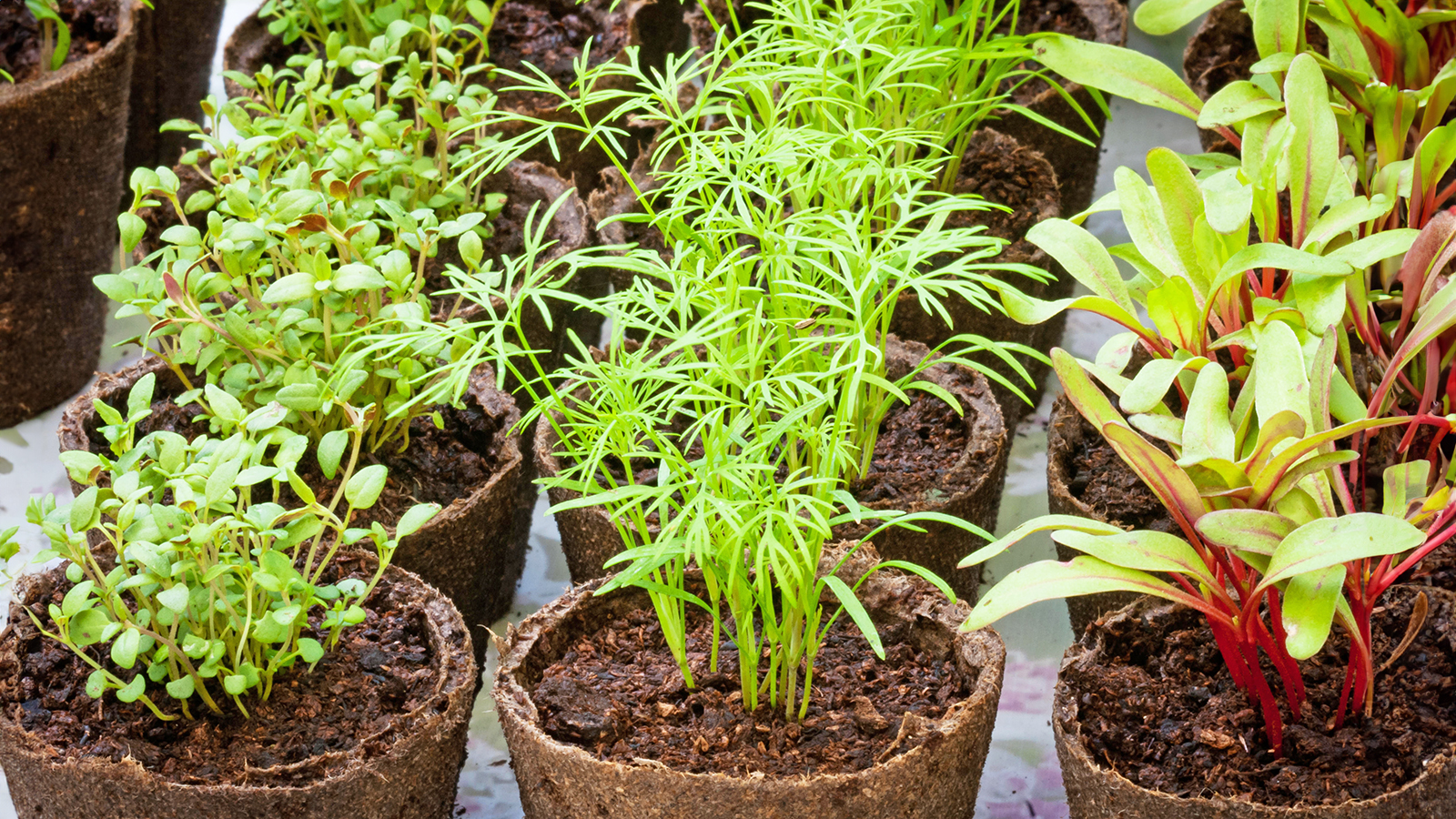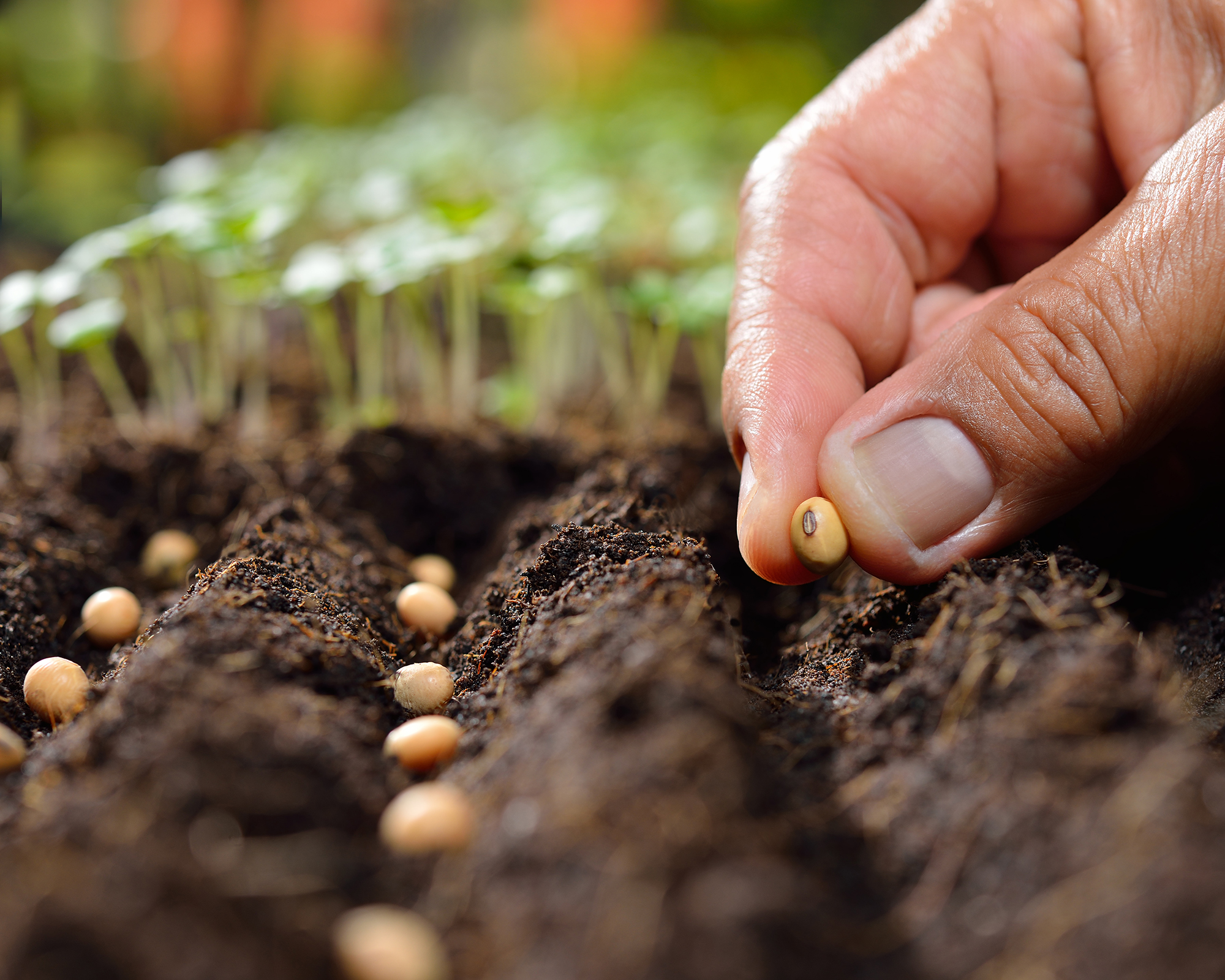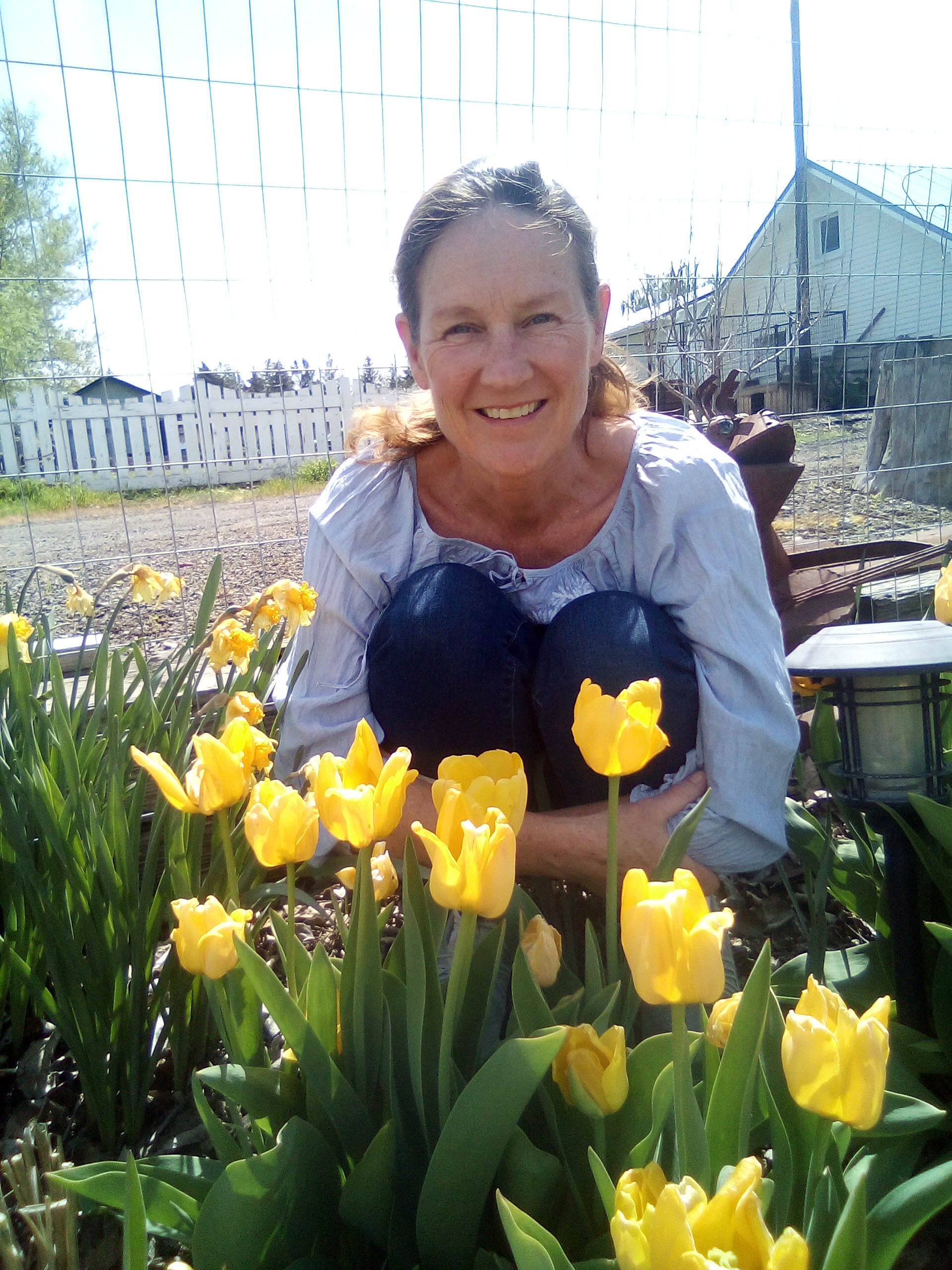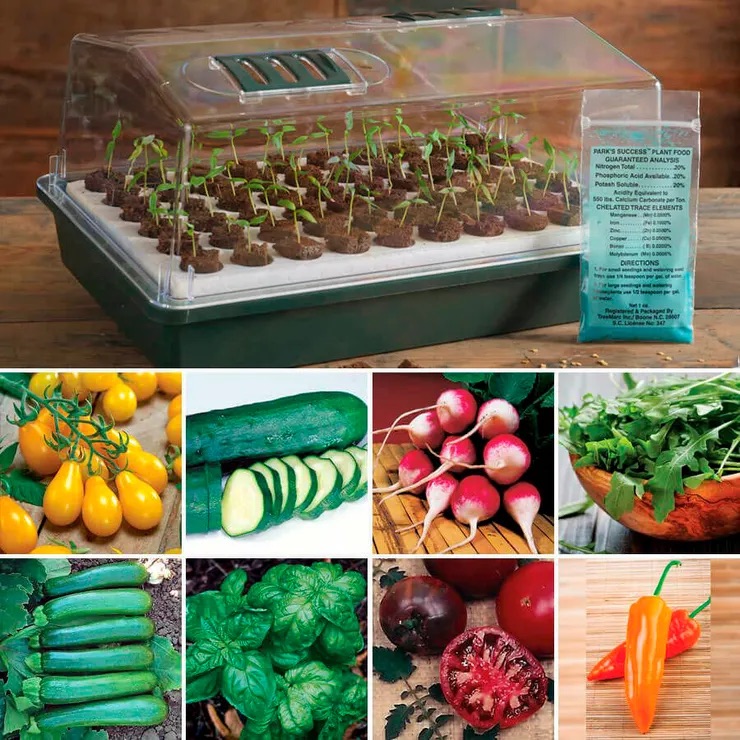Best Fast-Growing Seeds For Flowers & Vegetables In A Hurry
Whether you can't wait to start growing or have left it to the last minute, these fast-growing flower and vegetable seeds will fill your garden in record time.

Melanie Griffiths

Simple impatience is one driving factor for why we might want fast-growing seeds. It can be hard to wait for our new plant babies, especially after a long, cold winter with no plant life outside. However, they're also a great choice if you've left planting to the last minute and hope to sow a quick crop before it's too late.
If you want to learn how to grow seeds quickly, then fast-growing flowers and vegetables are a great place to start. They will fill your plate with organic produce and bring color and dimension to the newly awakened spring garden after many months of sparseness. If you're new to planting seeds, then speedy varieties will boost your confidence and get you excited about what to grow next.
Whether you opt for starting seeds indoors or direct sowing seeds in the garden depends largely on the time of year and your local climate. For tender flowers and vegetables that won't tolerate a frost, check your last frost date. Knowing when to start planting seeds is important, as they will grow more quickly and successfully if sown at the right time.
Fast-Growing Flower Seeds
Annual plants will be your best bet for fast-growing flowers. There are many varieties, and some may be sown in fall for the quickest establishment in spring.
- Annual Phlox
Annual phlox should be planted 4 weeks before your last frost date. The seeds can also be sown in fall. Flowering ensues just 50 days after planting with rich, bright pink blooms. - Bachelor Button
Gorgeous blue flowers that will begin to appear 65 days after planting. A classic wildflower that should be planted as soon as soil is workable. - Calendula
Also known as "pot marigold", calendula is a prized medicinal flower that is also an excellent companion plant in the vegetable garden. Expect flowers in as little as 6 weeks after germination. - California Poppy
You can expect flowers just 60 days from planting California poppies, which have bright, sunny yellow petals and feathery leaves. - Cosmos
These much-loved daisy-like flowers stand tall in the garden and produce flowers in as little as 50 days from planting. - Nigella
Also known as love-in-a-mist, nigella is a rapidly growing plant that will emerge early in spring. It will begin to display the airy foliage and soft pastel flowers about 65 days after planting. - Marigold
Expect flowers in just 60 days from planting marigolds. These sunny flowers are hated by many pests, making them incredibly useful when planted with vegetables. - Nasturtium
These vining beauties are also popular companion plants and should flower within 60 days of planting. - Sunflowers
While you may have to wait a bit to see the giant flower heads, sunflowers can literally be seen to grow on a daily basis. Some varieties will have flowers in 70 days. The biggest varieties will grow up to 12 feet (3.6m) in just 3 months. - Sweet Alyssum
This cool-season annual can be sown indoors or outdoors in spring and will flower in around 60 days after sowing. Sweet alyssum is a low-growing plant that's perfect for edging paths or as ground cover. - Zinnia
Depending on the variety, zinnia flowers typically bloom around 60 to 80 days after planting from seed. Get maximum value by choosing cut-and-come-again zinnias for home-grown bouquets.

Fast-Growing Vegetable Seeds
Cool-season crops tend to be the quickest producers from seed to fruit or pod. Most warm-season vegetables will need several months from seed to table. Practice succession planting so you always have a ready supply of delicious produce.
Most of these fast-growing vegetables can also be grown as microgreens, ready to snip and enjoy in days rather than weeks.
- Arugula
This salad staple has peppery leaves that are ready for harvesting in less than a month after planting. Plus, it reseeds easily for a continual harvest. - Beans
Green beans of all varieties sprout and grow quickly. Try bush beans, which are ready to start harvesting in 50 to 60 days and don't need staking. - Beets
These roots prefer the cooler part of the year and can even be left in the ground in winter in most zones. They are fully mature in 60 days, but can be used younger as tender baby vegetables. The leaves are delicious lightly steamed or added to salads. - Bok Choy
Once only known in Asian cuisine, this vegetable is useful in many applications, either raw or cooked. Used in applications similar to cabbage, it is ready to enjoy in 50 days from seeding. - Cucumber
While these are warm-season vegetables and prefer the summer months, you can be eating the fresh, crisp fruits in around 50 days after planting. - Kale
Kale typically takes 50 to 75 days from seeding to maturity. However, you can start harvesting baby leaves in as little as 30 days. - Lettuce
Whether you like bib, romaine, or head lettuces, these are best in the cooler months and can be ready in as little as 45 days. The loose leaf varieties are the fastest and they can be enjoyed when little as baby greens. They are also great cut-and-come-again crops. Cut the leaves off near the base of the plant, and new leaves will form. - Peas
With a wide variety available and both bush and pole beans common, beans will fill your table within 60 days of planting. They prefer cooler weather and should be started outside as soon as the soil is workable in spring. Soak the seeds overnight prior to planting for quicker germination. - Radishes
There are over 100 varieties of radish, diverse in size, flavor, and color. These are the quickest food crops, which are ready to snack upon in just 6 weeks. - Scallions
Also known as green onions or spring onions, they are ready to start harvesting in as little as 20 days and are delightful in salads and stir-fries. Once harvested, you can even regrow them from scraps. - Turnips
You can enjoy two crops in one with these versatile vegetables by eating both the roots and the greens. Start harvesting in as little as 6 weeks from sowing.

Tips for Growing Seeds Quickly
To speed up the growing process, it's essential to choose plants that have a fast growth rate. For example, many experienced gardeners know their first produce will be radishes, seeds that germinate rapidly and produce those tasty roots quickly. However, you need to consider the adage "right plant, right place". If the plant is suited to the soil, light, temperature, and other factors, it will grow much more quickly than if it is in an inhospitable site.
Sign up for the Gardening Know How newsletter today and receive a free copy of our e-book "How to Grow Delicious Tomatoes".
Several techniques can boost seed germination. Give your plants a jump start by soaking seeds before planting or scarifying seeds to break down the hard seed coating and allow moisture to penetrate. Some seeds benefit from a period of cold treatment first, known as stratifying seeds.
Beginning seeds indoors under a humidity dome can allow you to plant much earlier than outdoor conditions would dictate. That means you will have robust plants ready to move outdoors once the temperatures and lighting are favorable. Use a good quality seed-starting mix, and make sure you put drainage holes in your tray before planting.
Follow seed packet instructions for how deep to plant seeds in the soil as well as spacing. Most seeds need temperatures between 65 and 75°F (18 to 24°C) for the best results. Once they sprout, put the seedlings in a sunny spot or under a grow light and begin to thin seedlings as necessary.
Starting seeds in a greenhouse or cold frame is another way to enjoy faster plants, and is ideal for winter sowing seeds of hardier varieties. They can help regulate the air and soil temperature, ensuring warmer conditions for quicker growth. Even a simple DIY cloche over a plant will make a micro-climate more suited for speedy maturity.
More Seed-Starting Inspiration
- Struggling to grow? Fix these 7 seed-starting mistakes before it's too late.
- Browse our expert-curated seed collections in the Gardening Know How Shop, from vegetables for containers to flowers for butterflies.
- Learn how to DIY seedling trays for free by starting seeds in egg cartons.
- Not sure how often to water seedlings? Discover the best schedule for healthy growth.
- Sign up to our FREE seed-starting workshop, and learn the basics of seed-starting from master gardener Geoffrey Johnson.

Bonnie Grant is a professional landscaper with a Certification in Urban Gardening. She has been gardening and writing for 15 years. A former professional chef, she has a passion for edible landscaping.
- Melanie GriffithsEditor in Chief
